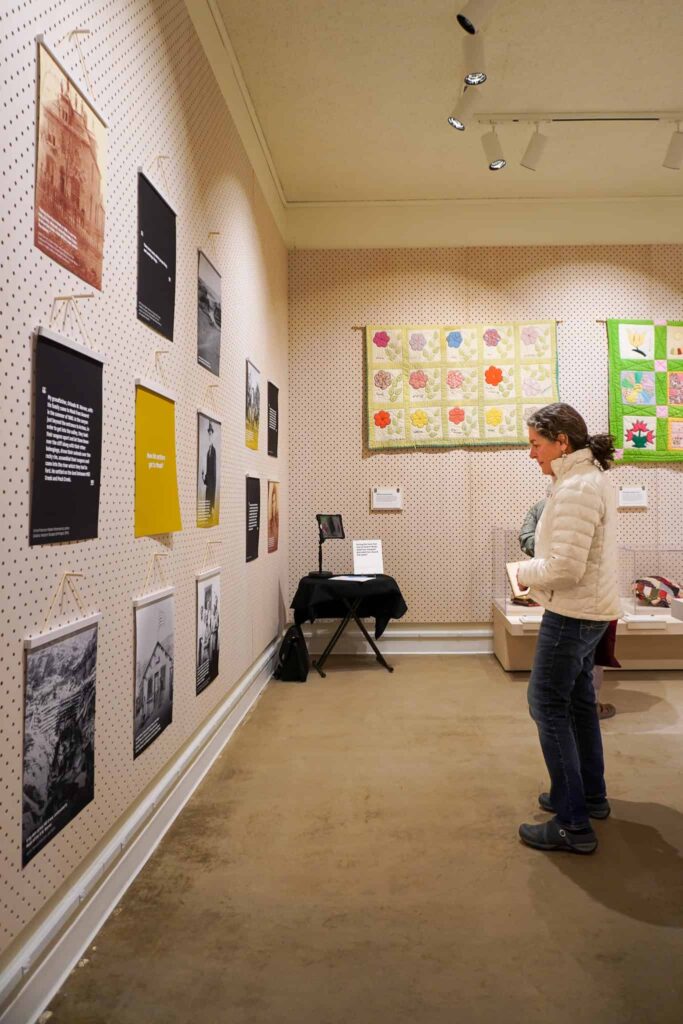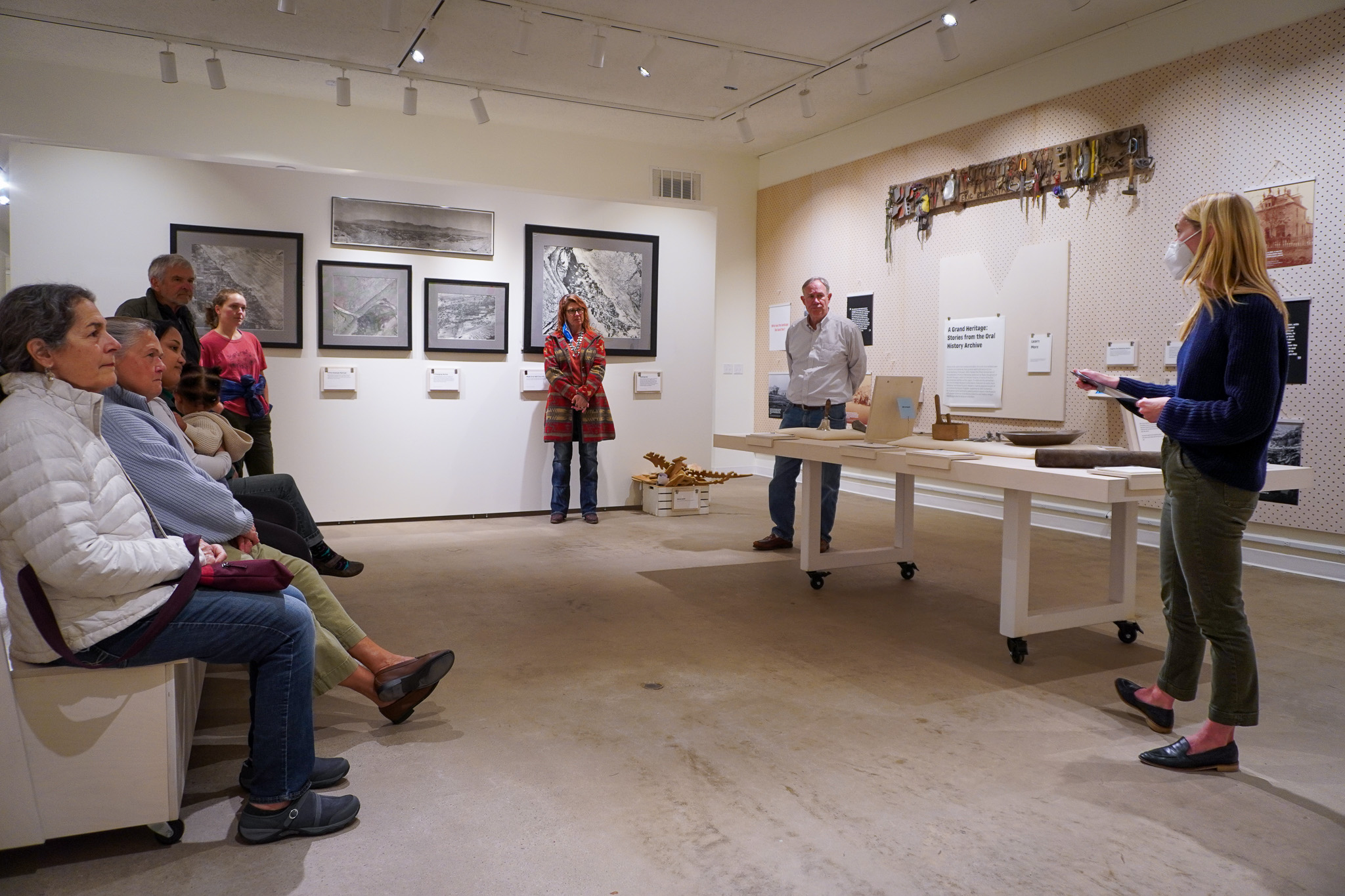Some information may be outdated.
In 1997, Sylvia Harris Ekker described her grandmother’s relationship with the Wild Bunch in an oral history given to the Moab Museum:
“The Wild Bunch used to come by on their way between Price, Ferron, and Robbers Roost. One time, three men stopped by to water their horses. They asked [my] Grandmother Harris to take care of them. When finished, she said they each owed her 45 cents. They refused to pay. She pulled her gun and they paid up fast.”
That little piece of Moabite history, along with many others, is on display now at the Moab Museum as part of its Grand Heritage exhibit.
The exhibit displays quotes, photographs, and items gathered from the 1880s to the mid-1900s as part of the museum’s decades-long oral histories project; the oral history project itself, in which locals are interviewed about their lives in Moab, continues to gather histories today.
“For the past few years, we’ve been digitizing our oral histories—Christy Williams did a ton of work splicing together crumbling cassette tapes, I, along with seasonal interns and volunteers, have been digitizing histories gathered on CDs, cassettes, floppy disks, and we’ve been organizing all of it to make it more publicly accessible,” said Mary Langworthy, the museum’s public programs manager.

When putting the exhibit together, Langworthy chose the timeline—1880s to the mid-1900s—to highlight information gathered from oral histories that were only written down, as there was no way to digitally record information at the time. The museum is currently working on producing a podcast of its oral history collection; histories from that time period would obviously be left out.
“Some of these early ones are so cool—there’s so much juicy info in them, and we can’t put them in a podcast because they have no audio,” Langworthy said. “I wanted to give them legs, because they’re awesome research resources.”
The exhibit organized the quotes and photographs into a few different themes—quotes are gathered underneath questions such as, “How did people make a go of it before the uranium mining boom of the 1950s?” and “How did settlers get to Moab?”
Langworthy has spent “dozens and dozens” of hours digitizing the museum’s oral history collection, she said. In doing so, she would pull out certain quotes or anecdotes she knew she wanted to include in the exhibit; she said it was also exciting to recognize a last name from a street name in town.
“Sometimes I’d take a peek [at an interview] and just get sucked in—people say really quotable things,” Langworthy said, pointing to a quote from Amasa Larsen in 1934: “Shoes were a great pleasure that wasn’t to be had at all times.”

The exhibit also includes three quilts created by local women over the span of nearly 100 years. There’s a chance for museum-goers to record their own brief oral history too, answering the question of what they’ve seen change and stay the same since living in Moab.
Three programs go along with the exhibit: every Thursday at 10 a.m., Stephan Zacharias, the museum’s history programs interpreter, leads an hour-long walking tour called “Livestock Built This City.”
The tour will take participants on a one-mile guided experience through Moab to learn about the men and women who helped establish the city.
Thursday, March 23 is World Meteorological Day: to celebrate, the museum is hosting KKCO 11 News/KJCT News 8 meteorologist Christopher Guevara at 10 a.m. and 2 p.m. to give a talk called “The Way the Atmosphere Shapes Our Everyday Lives.” Talk-goers are also encouraged to explore a brief history of George Henry Crouse, Moab’s first local co-operative weather observer, within the Grand Heritage exhibit.
To round out exhibit programming, there will be two “Recording Stories” workshops on Wednesday, March 29 and Wednesday, April 26, both from 5 to 6 p.m. Participants will learn about the museum’s oral history collection and share interview tips for recording compelling stories with friends and family.
More information about the exhibit and programming can be found at www.moabmuseum.org. Museum admission is $10; $8 for seniors, students, children, and members of the military.
Appreciate the coverage? Help keep local news alive.
Chip in to support the Moab Sun News.





